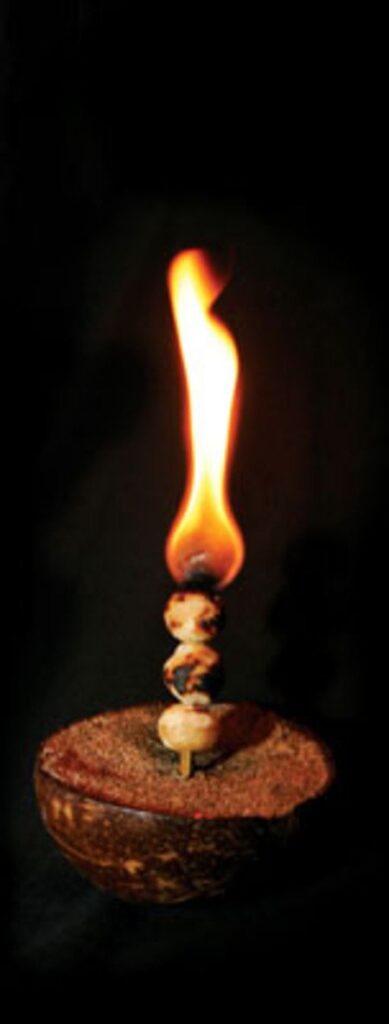When the Hawaiian Music Hall of Fame honored ‘Hawaiʻi Aloha’ as one of five traditional songs as a ‘Famous Song’ (1998,) they noted,
“For more than 100 years, love of the land and its natural beauty has been the poetry Hawaiian composers have used to speak of love. Hawaiian songs also speak to people’s passion for their homeland and their beliefs.”
The Hawaiian Music Hall of Fame further noted, Hawaiʻi Aloha is “widely regarded as Hawaiʻi’s second anthem”. (Hawaiian Music Museum)
“It is performed at important government and social functions to bring people together in unity, and at the closing of Hawaiʻi Legislative sessions. Today, people automatically stand when this song is played extolling the virtues of ‘beloved Hawaiʻi.’”
Hawaiʻi Aloha was written by a Protestant missionary, Lorenzo Lyons.
“In 1998, The Advisory Board honored these traditional songs for their beauty and their messages, which have made them popular, with concert performers and recording artists, as well as the public.”
Hawaiʻi Aloha has three verses, but most typically sing the first verse and repeat portions of the chorus:
E Hawaiʻi e kuʻu one hānau e
Kuʻu home kulaiwi nei
ʻOli nō au i nā pono lani ou
E Hawaiʻi, aloha ē
Hui:
E hauʻoli nā ʻōpio o Hawai`i nei
ʻOli ē! ʻOli ē!
Mai nā aheahe makani e pā mai nei
Mau ke aloha, no Hawaiʻi
Reverend Lorenzo Lyons was fluent in the Hawaiian language and composed many poems and hymns; his best known and beloved work is the hymn “Hawaiʻi Aloha” sung to the tune of “I Left It All With Jesus.” He wrote it in about 1852.
Here’s the English translation:
O Hawaiʻi, o sands of my birth
My native home
I rejoice in the blessings of heaven
O Hawaiʻi, aloha
Chorus:
Happy youth of Hawai`i
Rejoice! Rejoice!
Gentle breezes blow
Love always for Hawaiʻi
Collaboration between native Hawaiians and the American Protestant missionaries resulted in, among other things, the introduction of Christianity, the creation of the Hawaiian written language, widespread literacy, the promulgation of the concept of constitutional government, making Western medicine available and the evolution of a new and distinctive musical tradition.
Oli and mele were already a part of the Hawaiian tradition. “As the Hawaiian songs were unwritten, and adapted to chanting rather than metrical music, a line was measured by the breath; their hopuna, answering to our line, was as many words as could be easily cantilated at one breath.” (Bingham)
Some songs were translations of Western songs into Hawaiian; some were original verse and melody. Hawaiʻi Aloha is an example of the music left as a lasting legacy by the missionaries in the Islands.
Missionaries used songs as a part of the celebration, as well as learning process. “At this period, the same style of sermons, prayers, songs, interrogations, and exhortations, which proves effectual in promoting revivals of religion, conversion, or growth in grace among a plain people in the United States, was undoubtedly adapted to be useful at the Sandwich Islands. … some of the people who sat in darkness were beginning to turn their eyes to the light”. (Bingham)
“The king (Kamehameha III) being desirous to use his good voice in singing, we sang together at my house, not war songs, but sacred songs of praise to the God of peace.” (Bingham)
Hawaiʻi Aloha was not the only popular song written by the missionaries.
One of the unique verses (sung to an old melody) was Hoʻonani Hole ‐ Hoʻonani I Ka Makua Mau. Missionary Hiram Bingham wrote/translated it to Hawaiian and people sang it to a melody that dates back to the 1600s – today, it is known as the Hawaiian Doxology.
“In 1872, (Lyons) published Buke Himeni Hawaiʻi containing over 600 hymns, two thirds his own composition. Some years later he prepared the Sabbath School Hymn and Tune Book Lei Aliʻi.””
“The Hawaiians owe entirely to his exertions their introduction to modern enlivening styles of popular sacred music.” (Hawaiian Gazette, October 19, 1886) The image shows the lyrics in Hawaiian and English






















